The Old Testament (abbreviation: OT; the "Old Covenant") was written in ancient Hebrew; short sections in the books Daniel and Esra have also been written in Aramaic. The OT consists of 3 divisions or parts: the Law (Hebrew Torah), the Prophets (Nevi'im), and the other Writings (Ketuvim). Based on the initial letters "TNK", the Hebrews designate the Old Testament as "TaNaKh". Originally the OT was written on 22 scrolls (the canonization was already done by Esra and Nehemiah), but it contains a total of 39 or 43 individual books. We know today exactly how the Old Testament Bible (OT) was structured at the time of Jesus; this is not a secret and it never was (see correct book order). Not only do we know that the OT consists of three parts, but we even know at which position each book was located:
- The Law (Torah) consists of the 5 books of Moses and is therefore called the Pentateuch (Five-Scrolls). The individual scrolls are: Genesis (in the Beginning, Beginning Scroll), Exodus (Excerpt Scroll), Leviticus (Levites, Priest Scroll), Numbers (Numbers Scroll), and Deuteronomy ("Second Law", or Repetition Scroll).
- The Prophets (Nevi'im) consist of 3 parts: [1] the early ones (Joshua, Judges, Samuel and Kings) and the late prophets who were divided into [2] the three great prophets (Isaiah, Jeremiah, Ezekiel) and [3] the 12 little prophets. The total of 21 prophetic books were written on only 6 scrolls since the shorter books (Joshua/Judges, Samuel/Kings, Ezra/Nehemiah) and the 12 little prophets were written on only one scroll.
- The Writings (Ketuvim; also called Psalms, since the Psalms first appear) were written on 11 scrolls (50% of the OT) and contain 12+5=17 single books. They are a collection of songs, sayings and wisdom that describe the relationship of the church to God.
The first part consists of 7 books of Wisdom and Poetry (5 books of the Psalms, Proverbs and Job). The 150 Psalms (Greek biblos psalmon = Book of Songs; e.g. mentioned in Acts 1:20) were indeed written on one scroll, but originally they consisted of 5 books, which are now divided into chapters (1-41, 42-72, 73-89, 90-106, 107-150).
The second part consists of the 5 Festival Scrolls (Megillot), a collection of writings, which were read at feast days. The order of the books is determined by the harvest times: Song of Songs (March/April; Passover; feast of first fruits), Ruth (May/June; Pentecost, Shavuot; wheat harvest), Lamentations (9th of Av; July/August; an annual feast day in Judaism which commemorates the anniversary of a number of disasters in Jewish history, primarily the destruction of both the First Temple by the Babylonians and the Second Temple by the Romans in Jerusalem), Ecclesiastes (September/October, Feast of Tabernacles, Soukkot; olive and grape harvest) and Esther (February/March; Purim). The Festival Scrolls were considered a group early on (more information).
The third part consists of the Revelation of Yahweh (YHWH) to Daniel, historical information’s and restoration. The last books of the OT and of the NT are closely related. This applies in particular to the book of Daniel, which is likewise connected with the Revelation of the NT. The two Books of Chronicles (as the last books of the OT) mention the summary of the OT church, as chapters 2 and 3 of Revelation summarize the NT church.
The OT consists altogether of 3 divisions, 7 sub-divisions and has 3x12=36 book names. The order of the books listed in the table below correspond to the Hebrew Bible (Tanakh and Masoretic text), which we have already had for over 2,000 years. The correct order of the 39 or 43 (if the psalms are counted as 5 books) of individual Hebrew books is not invented by us, but it is the very old order of Tanakh. This is evident from many literature sources (see Link).
The Christians have taken over all the 39 books of the OT, even if the order differs in some Bibles. However, we do not stick to the new divisions, which are thought out by theologians, but we prefer the ancient order of Tanakh, which is also confirmed in Wikipedia and many other books (examples). This old order of the 39 or 43 individual books of the OT was also used at the time of Jesus. Many Christians neglect the OT; which is a big mistake, because the New Testament (NT) can only be fully understood if the basis of the OT is present. Conversely, the OT can only be fully understood if the knowledge of the NT is present, because it shows in many cases the exact fulfillment of the old prophecies. The OT was not just a Hebrew scripture collection, but it was also the Bible of Jesus Christ and the first Christian church ("early church"), for the 27 Greek books of the NT did not appear until decades after Jesus' death. Jesus Christ confirmed the 3 parts of the Hebrew Bible (His Bible) with the following words:
"These are the words which I [Yeshua, Jesus] spake unto you, while I was yet with you, that all things must be fulfilled, which were written [1.] in the LAW of Moses, and [2.] in the PROPHETS, and [3.] in the PSALMS, concerning me. Then opened he their understanding, that they might understand the SCRIPTURES" (Luke 24: 44-45).
The OT was written on 22 scrolls, as Flavius Josephus (Roman Jewish historian who lived at the same time and in the same geographic area where the NT was written), Jerome (the writer of the Latin Vulgate) and many others prove (see Link). From the end of the 1st and the beginning of the 2nd century AD, some Jewish groups split the first two prophetic scrolls so that they came to the desired number 24 (2x12) so that they could assign 2 books to each tribe. However, the OT originally had exactly 22 scrolls, because the Hebrew alphabet has 22 letters and Jacob (later renamed to Israel) is the 22nd generation. The number 22 means the complete completion of the OT, but both the 39 and the 43 are incomplete numbers and show that something is missing, namely the NT with its 27 scrolls (books). Number symbolism is also an important clue for the Jews to recognize Jesus Christ. The Bible is complete only with the OT and the NT. This shows the symbolism of the numbers, the final and complete conclusion, the complete Bible: 22+27=49=7x7 rolls with 39+27=66=3x22 or 43+27=70=10x7 individual books.
The New Testament
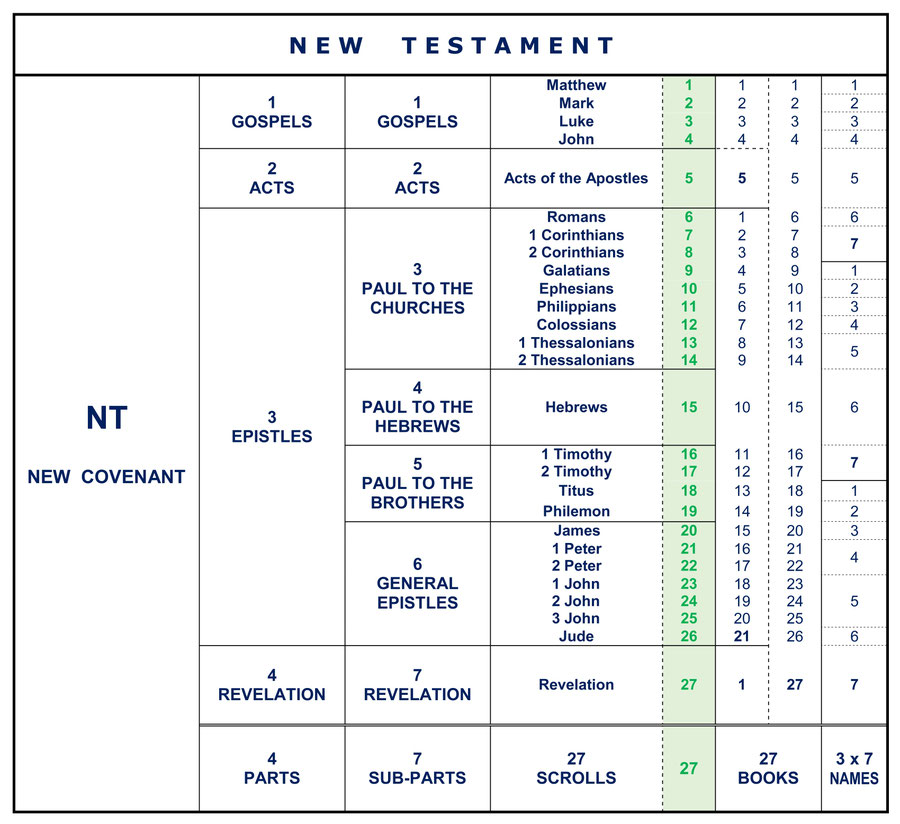
The New Testament (NT; the "New Covenant") has been written in Greek, the then world language, so that it can be found and understood everywhere. It consists of 4 parts and was written on 27 (5+22) scrolls. In the NT, each scroll corresponds to a book. There are 27 books, but only 21 single book names (3x7), since it contains, for example, not only one, but also two letters to the Corinthians, etc.
- The Gospels of Matthew, Mark, Luke and John describe the life and ministry of Jesus as the Messiah (the Christ) from 4 different perspectives. They cover the period from His birth to His resurrection, with special attention paid to the last 3.5 years of Jesus' activity.
- The Acts of the Apostles mention the events in the first Christian church after the resurrection of Jesus. The 4 Gospels and the Acts of the Apostles together form the 5 historical books of the NT. They sketch how the first Christian church has implemented the new spiritual law of love. The Gospels show the visible and the Acts the invisible activity of Jesus Christ for his international Christian family.
- The Epistles (apostolic letters) consist of the 14 Pauline letters and the 7 letters of the 4-Apostles. The Epistles of Paul have certain recipients, but the 4 Apostles wrote to all and generally: from the three centuries onwards, they were therefore called "general" or "Catholic letters" (abbreviation of the Greek catholicos=general; this has nothing to do with the Catholic Church). The Pauline Letters (Epistles) can be divided into 3 groups. The first letters were written to the 7 churches. After this, the letters to the Hebrews and to 3 selected members of the Christian church. Paul wrote the Epistle to the Hebrews, although some theologians doubt it because of the writing style. All 21 (14+7=21=3x7) letters fit harmoniously with each other and do not contradict each other. In the end, Peter clearly confirms all Pauline Epistles as valid (2Peter 3:15-16, see more information about the correct order).
- The Revelation of Jesus Christ to John has the 21st book name of the NT, is the 49th scroll and the 70th (and last) book of the Bible. John was the last living Apostle.
The order of books in the NT corresponds to that of most Bibles. Some scholars want to put the General Letters before the Pauline letters. This is also ok, but it is better to leave it in the previous order (the reasons are explained here: Link).
In the oldest written collections of the NT letters (Corpus Paulinum, Codex Sinaiticus, C. Vaticanus, ...) the Epistle to the Hebrews was always in 10th position. Some scholars are not sure if Paul wrote the Epistel to the Hebrews. However, this is not a problem, because instead of the "Pauline Epistles" also the term "Specific Epistles" can be used, in contrast to the 7 "General Epistles" which were generally (universally) written to the whole church. This illustration below can be accepted by all Christians worldwide:
The order of the books in the complete Bible
The OT consists of 3 parts (or divisions) and the NT of 4, so the entire Bible consists of 7 parts and 2x7=14 sub-parts. The Bible was written on 22+27=49=7x7 scrolls and has a total of 39+27=66 or 43+27=70 (7x10) individual books. The first 5 books of the OT and of the NT together form the 10 law books; however, the law of love in the NT standing above the OT. In the OT there are 21 (7x3) prophetic books for the local people of Israel and in the NT there are 21 letters for the worldwide Christian family. The Bible is not a normal book, it is a miracle. However, the most people will only recognize it when it's too late, because many churches, together with their pastors, are now asleep and do not know the Bible itself.
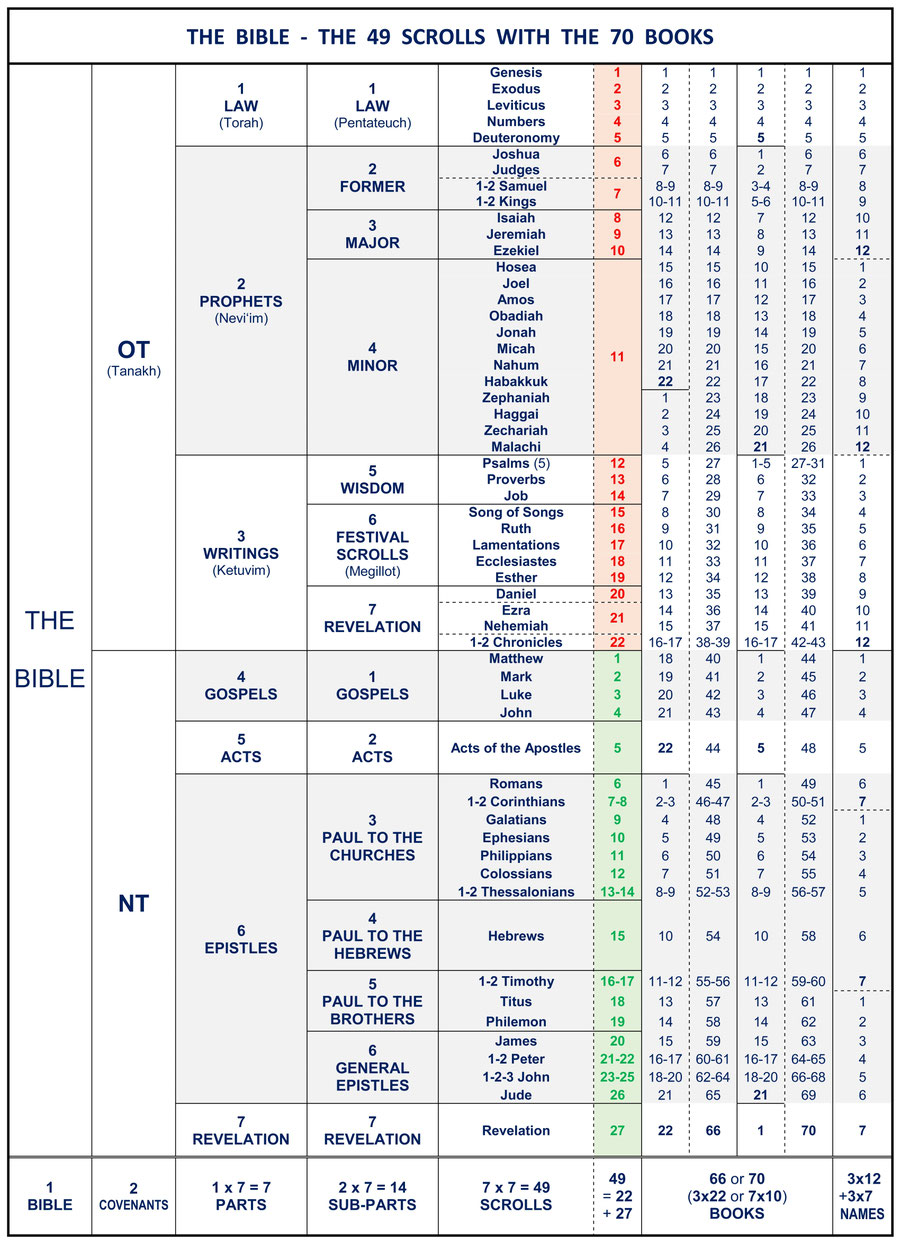
While in the OT the God Yahweh (YHWH) was revealed to the people of Israel, the NT shows the Son of God for the whole world. His name is "Jesus the Christ" ("Yeshua ha-Mashiach"). He already existed before He became human and corresponds to Yahweh (YHWH) in the OT (John 1:1-18, 1Cor 8:6, Col 1:16-17, Heb 1:1-3, cf. Ex 17:6 and 1Cor 10:3-4). Only He was authorized to pay the blame for our sins, and to save us from eternal death (Mt 1:21, Acts 4:11-12, 10:43, Ps 130:8).
Further illustrations of the Bible structure
The Library of God: The 70 Books of the Bible with the 2x7 parts of the OT / NT
The 7 Levels in the Construction of the Bible
The Bible shows on 7 levels (or dimensions) the work of God in the creation of the Bible. It focuses on Jesus in several ways. The 7 is the number of perfection in the plan of God. The 21 (3x7), 49 (7x7) and 70 (10x7) symbolize completeness and conclusion:
- 7 (1x7=7) Divisions of the Bible
- 14 (2x7=14) Sub-Divisions of the Bible
- 21 (3x7=21) Prophetic books of the OT, 21 letters of the NT and the 21 book names in the NT
- 49 (7x7=49) Scrolls of the Bible. 49 is the number of absolute completeness
- 70 (10x7=70) Books of the Bible (including 5 book Psalms), namely 66+4=70 or 3x21+7=70 or 49+21=70
- 66 (3x22=66) Books of the Bible, when the Psalms are counted as a book
- 36 (2x12=36)
1st Level: The Time, the Region and the Writer of the Bible
The Bible is the only book in the world that has been written over a period of more than 1,500 years by about 40 very different writers who have lived apart from each other in time and region and thus could not influence each other. No other book is comparable. God made two covenants, one with the local people of Israel and a new covenant with the worldwide Christian family. Accordingly, the contents of the books were adapted to time, region and people. Only God is in a position to plan such a unique work in advance and to preserve it for several millennia.
2nd Level: The Languages of the Bible with their Letters and Alphabets
The ancient Hebrew alphabet consists of 22 letters and the OT was written on 22 scrolls.
The ancient Greek alphabet consists of 27 letters and the NT was written on 27 scrolls.
Jacob, who was later renamed Israel, was the 22nd generation of Adam. The 22 is a number of Hebrew and the 27 is the number of Greek alphabetic completeness. The ancient Greek alphabet has 24 capital letters from alpha to omega, but the numeric special characters digamma (or stigma), koppa and sampi have to be added, because all 27 letters have a numerical value. The Hebrew and Greek alphabet have a total of 22+27=49 letters (7x7; the number of absolute completeness); therefore the whole Bible was written on 49 scrolls. It means: The letters are complete, no language and even not a single letter can be removed or added. All 22 Hebrew and 27 Greek letters have a numerical value. Thus, all Hebrew and Greek words automatically have a specific numerical value as well (see numerical values). More information about the letters of the Hebrew and Greek alphabet: Link.
3rd Level: The 49 Scrolls of the Bible
The OT was written on 2x11=22 and the NT was written on 5+22=27 scrolls. Together they are 22+27=49 scrolls. The 49 (7x7) shows the final conclusion and the eternal completeness of the Bible. Not only the letters, but also the scrolls are complete. No scroll can be removed or added. Jesus Christ stands in the center of the Word of God, precisely between the 22 scrolls of the OT and the 22 scrolls of the NT (22+22=44, 44+5=49). Jesus connects the two churches. The Gospels show the work of Jesus in the church from 4 different perspectives during his lifetime. The Acts of the Apostles shows the manifold activity of Jesus in the church after the Ascension. Through His death, He saved us from eternal death and cleared the way to eternity for all who follow Him and live without violence. These 5 scrolls are thus of central importance in all eternity, for they show Jesus and the eternal spiritual law of love.

4th Level: The 66 and 70 Books of the Bible
The Bible was written on 22 (OT) + 27 (NT) = 49 scrolls, but it contains a total of 39 (OT: 27+12=39) + 27 (NT) = 66 or 70 individual books, since the Psalms originally consisted of 5 books. Both views are correct because both the 66 (3x22) and the 70 (10x7) symbolize the final conclusion and completeness. They signify a double seal: No book may be added or removed. Both numbers also come together (Gen 46:26-27). The OT has 21+22=43 books (with the 5 books of the Psalms) and the NT has without the Gospels 21+2=23 books, together it is 43+23=66=3x22 books. The number 66 also symbolizes completeness, namely 3x22 (3 x the Hebrew alphabet from Aleph to Tav).
The 4 Gospels represent a special literature within the Bible, for they reveal the Son of God, who created everything, yet humbled himself, and came from the spiritual kingdom of heaven to this earth to save us (Phil 2:5-11; John 1:1-18, 17:5; 1Cor 8:6; Col 1:15-23; Heb 1:1-4). They are thus the most important books of the Bible. There are a total of 4+66=70 books of the Bible. The 70 is the number of completeness in the plan of God in mercy and judgement: 70 years of age (Ps 90:10); 70 descendants of Noah (Gen 10); 70 elders (Ex 24:1); 70 weeks of Daniel (Dan 9); Israel began in Egypt with 70 people (Gen 46:8-27); the preaching of the gospel began with 70 disciples (Luke 10:1.17). In the year 66 AD, the Roman army was sent to Israel and the Jewish-Roman war began and in 70 AD, Jerusalem was destroyed. Nearly all Jews were expelled from their country to the whole world. In addition, the Menorah was removed from the Temple (more information about the Menorah).
5th Level: The Division, Structuring and Grouping within the Bible
As is clear from the above figures, the books of the Bible are not meaninglessly distributed, but there is a clear structuring and grouping in the OT and NT. There is also a multiple number symbolism; especially the number 7 plays an important role and there are several groups of 3x7=21 books. OT and NT consist of 7 divisions and 2x7=14 sub-divisions. The Law and the prophets of the OT consist of 11 scrolls (50%) and the Writings (11 scrolls) as well. The OT already existed in 3 parts before Jesus was born. The 4 Gospels show the life of Jesus from 4 different perspectives and reveal Jesus Christ as the Savior of the world. Therefore, He is at the center of the whole Bible, which consists of 7 divisions:
The parallels between the structure of the OT and of the NT are clearly recognizable. The 70 books can be divided into 3 groups. Both Testaments start with 5 books, each with historical information and the proclamation of the law for the regional people of Israel (OT) and for the new worldwide Christian family (NT). Together, there are 5+5=10 books, the number of completeness of the law. The different commandments have been given to us personally by God and are not conceived by man. Then follow 21 church books of the prophets of Yahweh (OT) and 21 books (Epistles) of the disciples of Jesus Christ (NT) and as the conclusion the Writings with the Revelations in the OT and NT.
In the OT, there are 4 law scrolls plus the repetition scroll (Deuteronomy), and in the NT there are 4 Gospels plus the Acts, in which the word and life of Jesus is repeated in his disciples by following Jesus.
The 6 is the number of man and 60 is the number of all humankind, so the 21+21=42 church books of the OT and NT and the 17+1=18 Writings with the Revelations as the sum give the number 60. They show the life in the world and the consequences of disobedience (suffering and death). 42 (6x7) + 18 (6x3) = 60 (6x10) + 10 = 70 (7x10).
There is, indeed, a clear connection between the last group of the OT with its 5 books and the last book of the NT (cf. Dan 7:10 with Rev 20:11-15), which also describes the church as a kind of chronicle (Rev 1:4 to 3:22) with a restoration (cf. Ezra and Nehemiah with Rev 21-22). However, the so-called "Revelation of John" is really the "Revelation of Jesus Christ to John", as the first verse proves (Rev 1:1). Many want to eradicate the name of Jesus Christ, so they prefer to speak of the man John and thus put the true spokesman and the revealer in the background. In the OT, Yahweh (YHWH) gave revelations to Daniel, and in the NT, Jesus gave revelations to John. Both parts are important and complement each other.
6th Level: The Book Names of the Bible
Also in the selection of the book names and the number of books addressed to one addressee (for example, there is not only one letter to the Corinthians, but also two) the planning by God becomes clear. In the OT, exactly 3x12=36 book names were used. The 12 stands for the 12 tribes of Israel and the triple selection of names (3x12=36) means a complete conclusion. No other book name can appear in the OT, otherwise, the overall harmony of the numbers will be destroyed. In the NT, we have exactly the same situation, because there are 3x7=21 book names. The 7 stands for the worldwide Christian family and the triple name selection of the books makes it clear that no other book name can be accepted. It is not even possible to add or remove a single book to the same addressee, otherwise the total number of the 70 books would be destroyed and the harmony of the numbers would not exist.
7th Level: The Spiritual Dimension of the Bible
Even if the harmonies of numbers did not exist at all, the sensational content of the Bible testifies to the existence of God. This concerns the inspiration and inscription of historical events, the wisdom literature, the publication of commandments (especially the commandment of love) and the prophecies. If you already have the basic knowledge, you cannot get out of the astonishment. How was it possible that thousands of years ago the empires, individual rulers, as well as many very small details of the life of Jesus were laid down in writing? This is only possible through conscious planning of an existing spiritual power. The Bible has also been written in such a way that it can only be understood by those who have been given it (Dan 12:4-10; Luke 8:10, 9:45, 24:45). Even if people would memorize the whole Bible, they could never understand the Scripture without the Holy Spirit, and would consider this book to be a normal, strange and illogical work of world literature. But those who ask God for understanding and have a humble heart will recognize the spiritual dimension and understand the spiritual content behind the letters (1Peter 5:5-7; Mt 7:7; 2Cor 3:12-16; James 4:3). Through the Bible, we learn that there is not only a physical but also a spiritual world, and that God's goal is that we can be with him. Our life on earth is therefore only a short period of training for eternity.
God loves books, so he gave us the 49 scrolls with the 70 books, not to leave us alone in this world without knowledge. His books serve to make us grow in character to make the difference in this evil and God-distant world. We should learn character here and distinguish between good and bad, so do the good and avoid evil and to be a light and an example for others. This means, in concrete terms, to live in the discipleship of Jesus Christ (He is the light), to speak and act like Him, in His love. People who walk the path of love and serve others will receive eternal life in the spirit world, for the existence on this physical earth serves only the formation of character. It is a school for all eternity. Only with the Holy Spirit can people understand the spiritual dimension of the 49 scrolls with the 70 books of the Bible.
The 7 levels in the construction of the Bible show planning and the eternal completeness of the Word of God.
The Bible is not just a book, it is a miracle. Moreover, the Bible is complete:
No language, no letter, no scroll, no book and no book name may be removed or added
(Rev 22:18-19)
8th Level: The most important part is still missing, namely the "Scroll of Life"
The first 7 levels described the Bible as a visible book. It was written with 22+27=49 letters (of the ancient Hebrew and Greek alphabets) and the Bible was written on 22+27=49 (7x7) scrolls and contains 66 (3x22) and 70 (7x10) individual books. It is thus a finished work. All of these 70 books we can see and read. But the Bible reveals to us another scroll, which we cannot at present see. It is the invisible "Scroll of Life," the "Book of the Living," or the "Book of Life," as it is most often called (Ex 32:32-33; Isaiah 4:3; Psalm 69:28-29; Dan 7:10, 12:1-2; Mal 3:16; Luke 10:20; Hebrew 12:23; Phil 4:3; Rev 3:5, 13:8, 17:8, 20:12,15, 21:27, 22:19). The spiritual book of life is the 50th (49+1) and most important scroll. It is a list of names of people who will receive eternal life as a gift and reward for their love to God and their love for other people. Therefore, many Israelis at the time of the biblical autumn festivities say to each other "may your name be written in the Book of Life." However, many Christians go to church for many years and do not even know that there is a "Book of Life" at all (more information about the Book of Life). What is the meaning of life? The meaning of life, that is, learning love, distinguishing good from evil, so that our names may be written in the "Book of Life", so that we may live forever in harmony and peace and without problems.
The Final Judgement
"And I [John] saw the dead, great and small, standing before the throne, and BOOKS were opened. Another BOOK was opened, which is the BOOK OF LIFE. The dead were judged according to what they had done as recorded in the BOOKS... and each person was judged according to what they had done... Anyone whose name was not found written in the BOOK OF LIFE was thrown into the lake of fire" (Rev 20:12-15).
We shall be judged according to the content of the 49 scrolls with the 66 or 70 books of the Bible. Depending on whether we have love, our name is written into the Book of Life or not (Psalm 69:29; Dan 7:10, 12:1; Rev 20:11-15).
Today, God speaks to us through the 49 scrolls with the 70 books. However, the 50th scroll (49+1=50), the BOOK OF LIFE, symbolizes eternal life and thus the direct contact and perfect communion with God. It is the 71st book and serves to evaluate how we lived according to the 70 books of the Bible and where we will thus spend our eternal future.
THERE IS NO GREATER POWER THAN LOVE
LOVE is the goal of all 49 scrolls with the 70 books of the Bible - and the registration in the Book of Life
(1Tim 1:5)
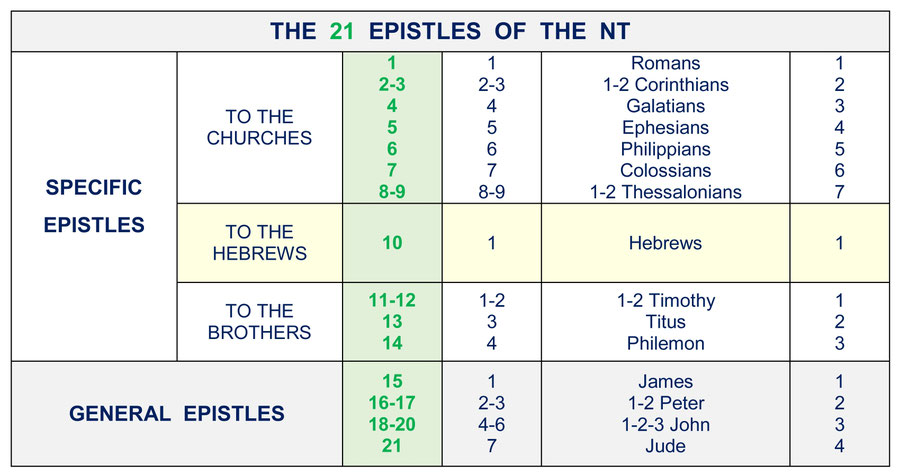
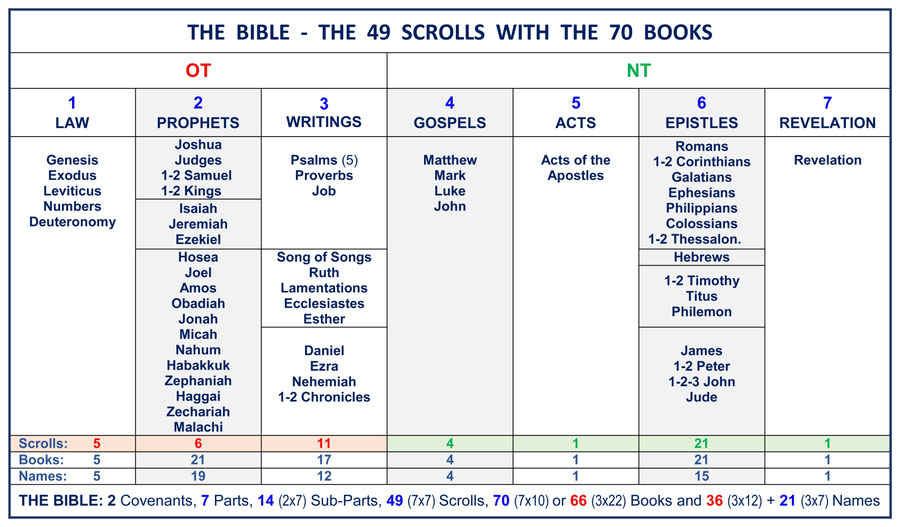
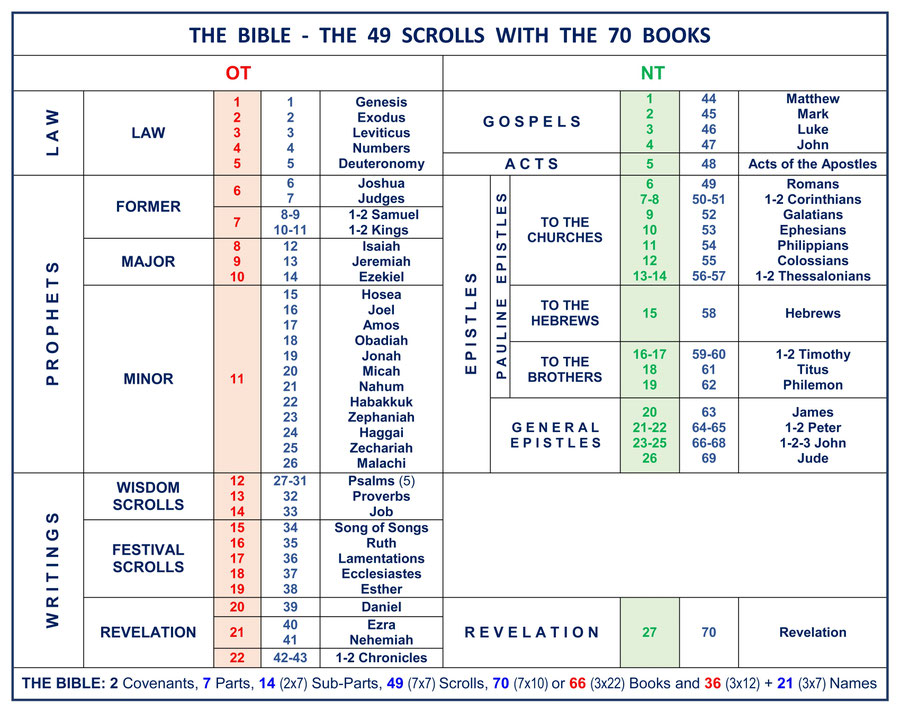


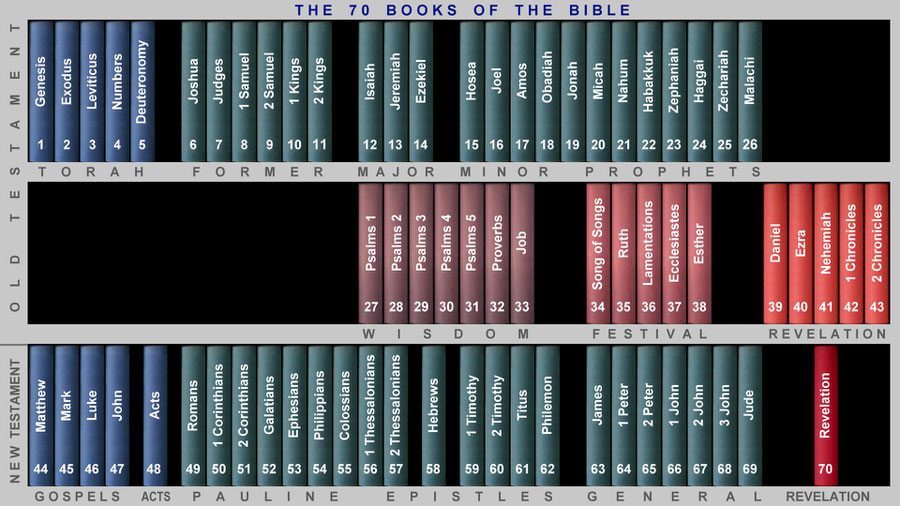





No comments:
Post a Comment